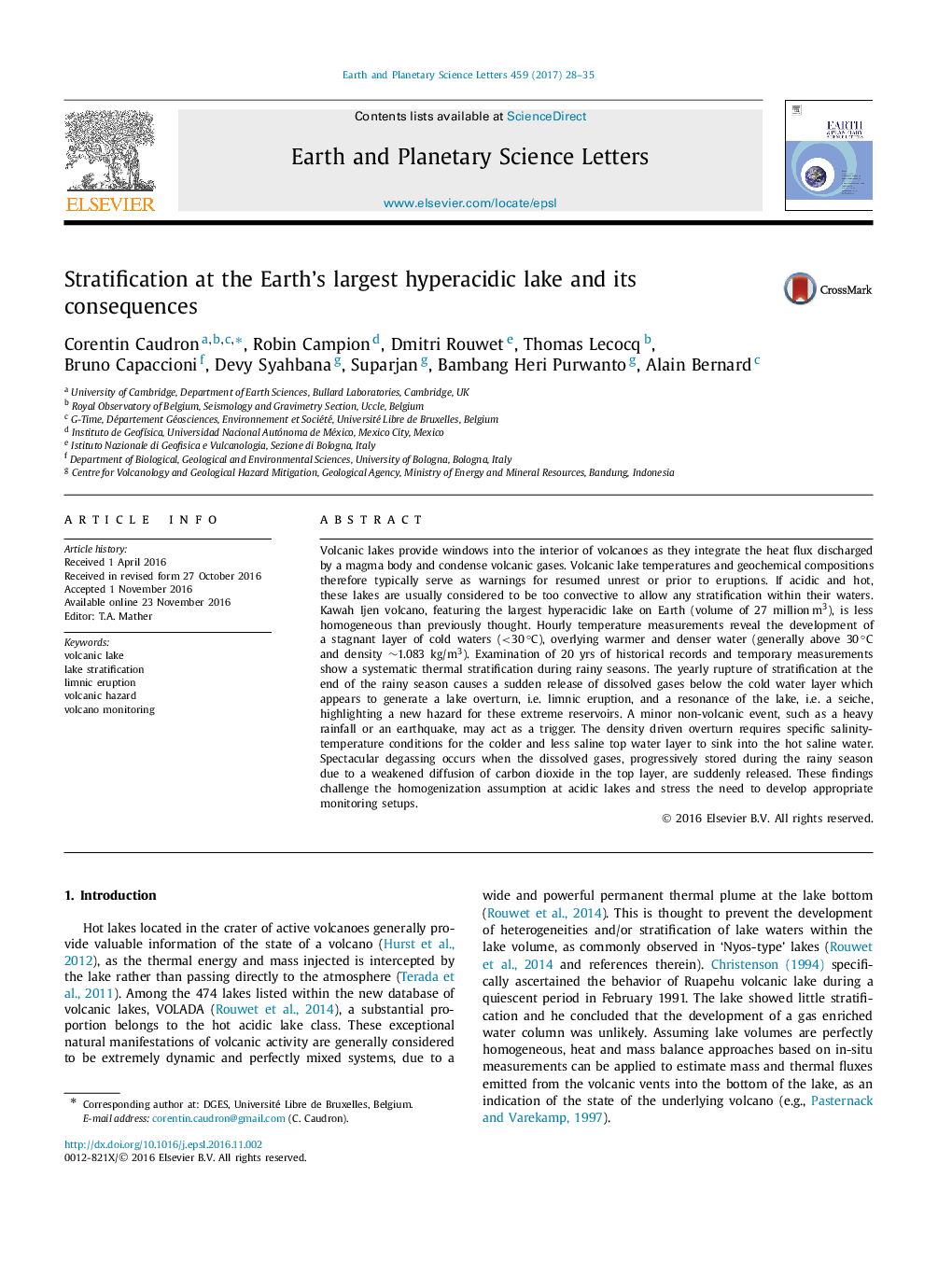| کد مقاله | کد نشریه | سال انتشار | مقاله انگلیسی | نسخه تمام متن |
|---|---|---|---|---|
| 5780123 | 1634697 | 2017 | 8 صفحه PDF | دانلود رایگان |
- Acidic lakes are not always perfectly mixed reservoirs.
- 20 yrs of data indicate a systematic lake stratification during rainy seasons.
- The density-driven rupture of stratification triggers a limnic eruption.
- New hazard for an hyperacidic volcanic lake: limnic eruption.
- The stratification favors the build-up of dissolved CO2 below the cold water layer.
Volcanic lakes provide windows into the interior of volcanoes as they integrate the heat flux discharged by a magma body and condense volcanic gases. Volcanic lake temperatures and geochemical compositions therefore typically serve as warnings for resumed unrest or prior to eruptions. If acidic and hot, these lakes are usually considered to be too convective to allow any stratification within their waters. Kawah Ijen volcano, featuring the largest hyperacidic lake on Earth (volume of 27 millionâm3), is less homogeneous than previously thought. Hourly temperature measurements reveal the development of a stagnant layer of cold waters (<30â°C), overlying warmer and denser water (generally above 30â°C and density â¼1.083 kg/m3). Examination of 20 yrs of historical records and temporary measurements show a systematic thermal stratification during rainy seasons. The yearly rupture of stratification at the end of the rainy season causes a sudden release of dissolved gases below the cold water layer which appears to generate a lake overturn, i.e. limnic eruption, and a resonance of the lake, i.e. a seiche, highlighting a new hazard for these extreme reservoirs. A minor non-volcanic event, such as a heavy rainfall or an earthquake, may act as a trigger. The density driven overturn requires specific salinity-temperature conditions for the colder and less saline top water layer to sink into the hot saline water. Spectacular degassing occurs when the dissolved gases, progressively stored during the rainy season due to a weakened diffusion of carbon dioxide in the top layer, are suddenly released. These findings challenge the homogenization assumption at acidic lakes and stress the need to develop appropriate monitoring setups.
Journal: Earth and Planetary Science Letters - Volume 459, 1 February 2017, Pages 28-35
